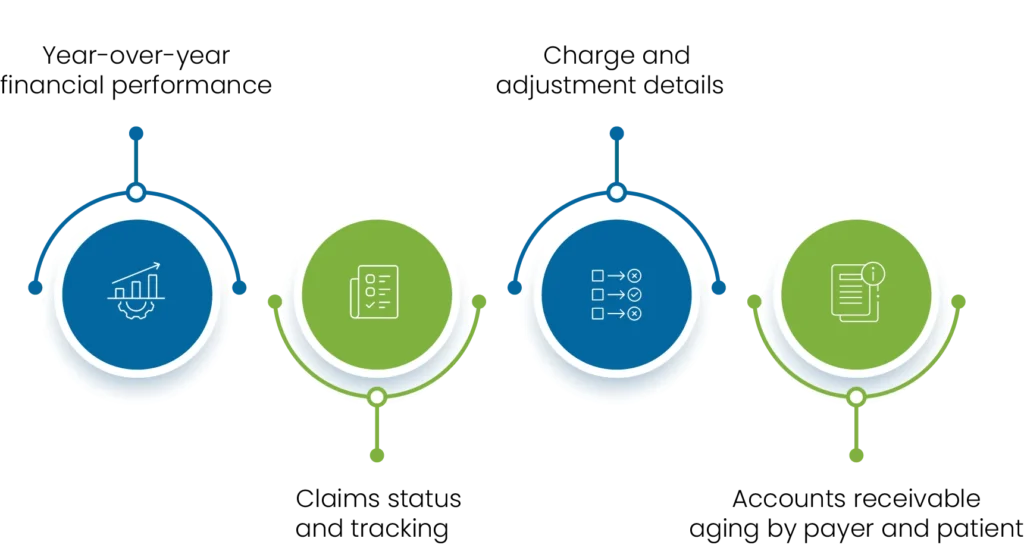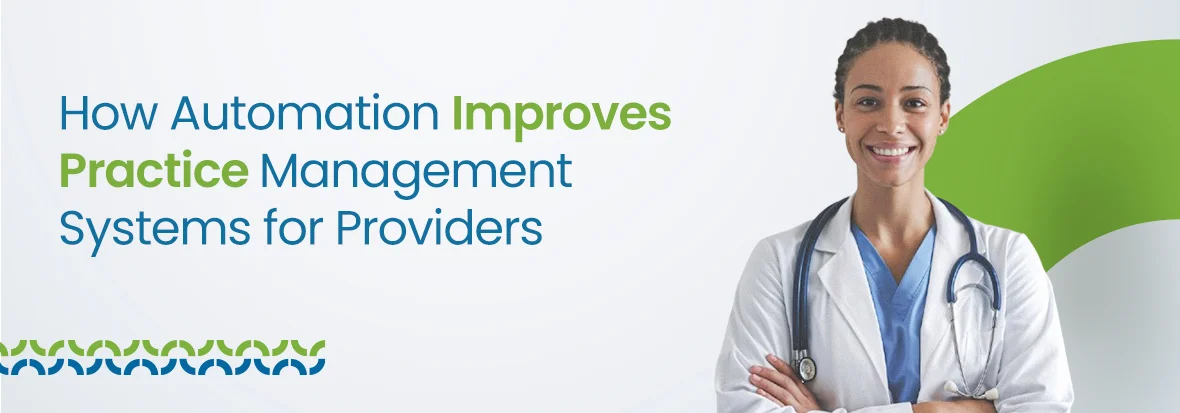Automation in healthcare has been a gradual yet inevitable progression. Although its adoption may not be as advanced as in other industries, research from McKinsey suggests that up to 33% of healthcare tasks can be automated. Among the primary beneficiaries of this innovation are medical practices.
While most healthcare providers may not prioritize growth, achieving stress-free scalability remains essential. On average, providers dedicate 15.5 hours per week to administrative duties, reducing the time available for patient care.
Administrative challenges, whether in patient scheduling or medical billing, can easily disrupt a practice’s workflow. However, implementing an effective medical practice management system can eliminate these bottlenecks and enhance efficiency.
This article explores the operational challenges medical practice management software addresses and provides insights into selecting the ideal solution for your practice.
Optimizing Practice Operations with a Practice Management System
Simplifying and streamlining practice operations is possible with a practice management system that automates key tasks. These include coding, billing, monitoring payer responses to claims, patient communication, clinical documentation, performance tracking, financial reporting, and managing quality program data. Automation not only optimizes these processes but also enhances their accuracy and efficiency.
While adopting a new practice management system can seem overwhelming, the American Medical Association (AMA) underscores its importance amidst significant industry transformations:
“For many physician practices, choosing the right practice management system (PMS) can be challenging. However, industry changes will require most practices to upgrade or replace their existing systems.”
These changes include evolving standards like Meaningful Use, the transition to ICD-10, requirements for clinical quality documentation to maintain revenue streams, and increasing demands for data-sharing to support coordinated care.
How Can a Unified Tech Stack Improve Your Medical Practice?
A unified healthcare tech stack can simplify daily operations by automating routine tasks, saving both time and money. Here’s how it can help:
- Simplify Appointment Scheduling and Reduce No-Shows
Missed appointments and cancellations can significantly impact revenue, with studies estimating losses of up to $7,500 per month for some practices. Additionally, over half of patients admit to canceling appointments within the past year.
Common reasons for missed appointments include:
- Emergencies or unexpected situations
- Work-related conflicts
- Forgetting the scheduled date
- Feeling better or downplaying health concerns
- Anxiety about procedures or outcomes
While some factors are beyond your control, technology can address many of these challenges. Automated appointment reminders via text or email can help patients stay on track.
Additionally, offering simple rescheduling options ensures patients receive necessary care while giving your practice the opportunity to fill open slots. Including clear instructions and details in confirmation emails about what to expect during the visit can further reduce cancellations.
By streamlining scheduling and communication, a unified tech stack ensures smoother operations and better patient engagement.
- Streamlining Patient Intake with Healthcare Automation
The traditional patient intake process can be time-consuming and inefficient, relying on paper forms and manual data entry. While this method remains common, it often leads to delays and errors that frustrate both patients and providers.
Switching to a digital intake process simplifies everything. Patients can complete forms online before their appointments, and the data is securely transmitted and automatically organized. This approach reduces human error, saves time, and ensures easy access across multiple platforms and devices.
- Achieve Seamless Interoperability with Modern EHR Systems
Outdated electronic health record (EHR) systems often lack the ability to connect with other platforms, forcing providers to rely on manual processes like phone calls or faxes to share information. This disconnect slows down decision-making and care delivery.
Modern, interoperable EHRs solve this issue by enabling seamless communication between systems. Providers can access lab reports, prescriptions, and patient histories all in one place, leading to faster, more informed decisions. This streamlining ultimately enhances the patient experience by reducing wait times and improving care quality.
- Minimize Administrative Burden to Support Staff
Healthcare employees are leaving the industry at an alarming rate, with over 500,000 quitting in July 2023 alone. Administrative tasks add to this pressure, contributing to burnout and dissatisfaction.
Automating these tasks can free up time and energy for your staff to focus on patient care. For example, practices using digital note-taking tools like Maximus have reported saving an hour per day, allowing providers to spend more time with patients instead of struggling with paperwork.
- Simplify Billing and Insurance Processes
Managing billing and insurance claims manually often leads to errors, delays, and revenue loss. Over half of denied claims go unresolved, creating a financial strain on both practices and patients.
Investing in automated practice management systems can improve your first-pass acceptance rate (FPAR) to over 95%, ensuring smoother revenue cycles. These tools reduce errors, prevent denials, and speed up payment collection, enhancing cash flow and reducing administrative stress.
The healthcare industry is moving away from outdated processes, and automation is the key to staying ahead. By adopting modern solutions, your practice can deliver better care while maintaining efficiency and profitability.
- Protect Patient Data with a Single, Secure Platform
As more practices shift to digital systems, safeguarding patient data becomes critical. Using multiple platforms increases the risk of data breaches and unauthorized access. Opting for integrated healthcare software simplifies operations while enhancing security.
Features like role-based access controls and multi-factor authentication protect sensitive information, ensuring compliance with regulations such as HIPAA. By consolidating your systems, you reduce vulnerabilities and streamline data management, keeping patient information safe and secure.
- Gain Revenue Insights with Analytics Tools
Efficient revenue management starts with understanding your financial metrics. Studies show that nearly half of healthcare providers collect payments more than 30 days after patient visits—a figure that worsens with manual processes and delayed claims.
Revenue analytics tools provide insights into key metrics such as:

These insights help identify inefficiencies and guide data-driven financial decisions to improve cash flow and operational performance.
- Simplify Reputation Management with Automated Feedback Surveys
Reputation is everything in healthcare, as nearly all consumers consider online reviews when choosing providers. Managing patient feedback effectively is crucial to maintaining trust and loyalty.
Automated feedback systems can gather patient opinions, monitor satisfaction levels, and send reminders for reviews. Some platforms also allow patients to share private feedback, enabling providers to address concerns constructively without risking public reputation.
By streamlining feedback collection and response, practices can improve patient relationships and build a positive reputation in their communities.
- Enhancing Interaction Between Patients, Providers, and Staff
The patient journey starts with finding the right provider, often through an online search, where visibility is crucial. It’s vital to equip your practice with the tools that not only help patients understand your services but also facilitate swift conversions.
Key features include:
- Easy appointment scheduling
- Automated appointment reminders
- Digital patient intake forms
- Post-appointment feedback collection
- Streamlined billing and insurance claims
Integrating all these features into one platform eliminates the need for staff to handle routine tasks that software can automate. Patients can easily ask questions, confirm appointments, or request clarifications, while providers can collaborate on care, and administrative teams can stay on top of everything — all within a unified system.
Choosing the Best Business Intelligence Software for Your Medical Practice
Selecting the right business intelligence software can transform your medical practice. Here’s a simplified guide to help you prioritize the most important factors.
Identify Your Practice’s Needs
Every practice is different, so start by evaluating your current challenges.
- Are administrative tasks like patient intake and billing slowing you down?
- Is your revenue cycle management inefficient?
Conduct a quick audit and focus on software that addresses these specific issues. This ensures you invest in solutions that solve real problems instead of unnecessary features.
Ease of Use
New software requires time to learn, but an intuitive interface makes a big difference. Choose software that’s user-friendly to reduce the learning curve and encourage faster adoption.
Before committing, ask for a demo or a trial period to see how it fits into your daily workflows.
Integration Capabilities
Your software should work seamlessly with existing tools. Look for a system that integrates with electronic health records (EHRs) and other platforms. This eliminates the hassle of transferring data manually and streamlines operations. For example, Maximus connects with more than 60 EHR systems, supporting functions such as:
This eliminates the need to manage data transfers across systems, as the integrations handle it seamlessly. It reduces the need to switch between multiple applications, improving operational efficiency, decision-making, and patient care.
Scalability for Growth
As your practice grows, your software should grow with it. A cloud-based solution is ideal since it adapts to increased patient volume without significant cost increases. Avoid systems that limit your ability to expand.
Advantages of Cloud-Based Practice Management Systems:
Cloud-based solutions can offer benefits not available in other practice management systems:
Industry-Responsive Upgrades: Updates happen without interruptions. Systems stay compliant with industry standards, including major changes like ICD-10.
Performance Insights: Systems collect performance data from practices and networks. They offer benchmarks for improvement and performance evaluation.
Enhanced Connectivity: Cloud platforms connect with hospitals, labs, rehab centers, and data sources. This improves coordination and care delivery.
Cost-Effectiveness
Skip systems packed with unnecessary features that inflate costs. Instead, opt for solutions tailored to your practice size and requirements. Cloud-based platforms often save money compared to on-premise systems, as they include maintenance, backups, and updates in the subscription cost.
Robust Security Features
Healthcare data breaches are on the rise, making security a top priority. Ensure the software complies with HIPAA regulations by offering:
- Data encryption
- Secure login with user authentication
- Audit trails to monitor data usage
- Regular security risk assessments
These features protect patient data and help you avoid legal and financial penalties.
Comprehensive Training and Support
Implementing new software can be overwhelming without proper guidance. Choose a vendor that offers:
- Onboarding sessions
- Product tutorials
- Technical support
- Detailed documentation
This support ensures your team uses the system efficiently and effectively.
Invest in Smarter Practice Management System
Choosing the right business intelligence software is an investment in your practice’s success. Focus on your needs, prioritize user-friendly features, and ensure scalability and security. By critically evaluating and testing options, you will find software that streamlines your operations and helps you provide the best patient care.

